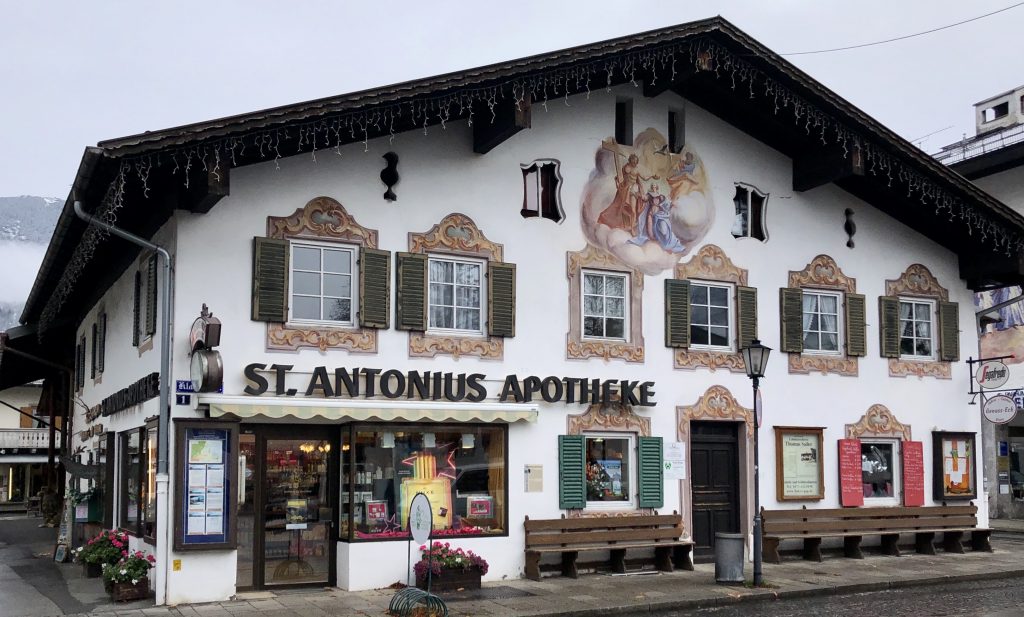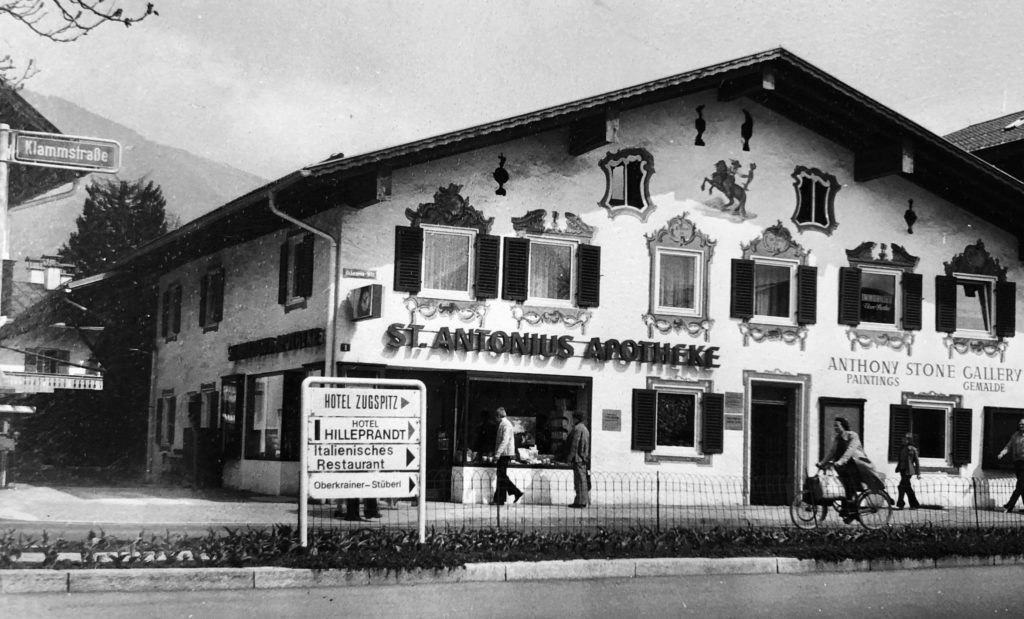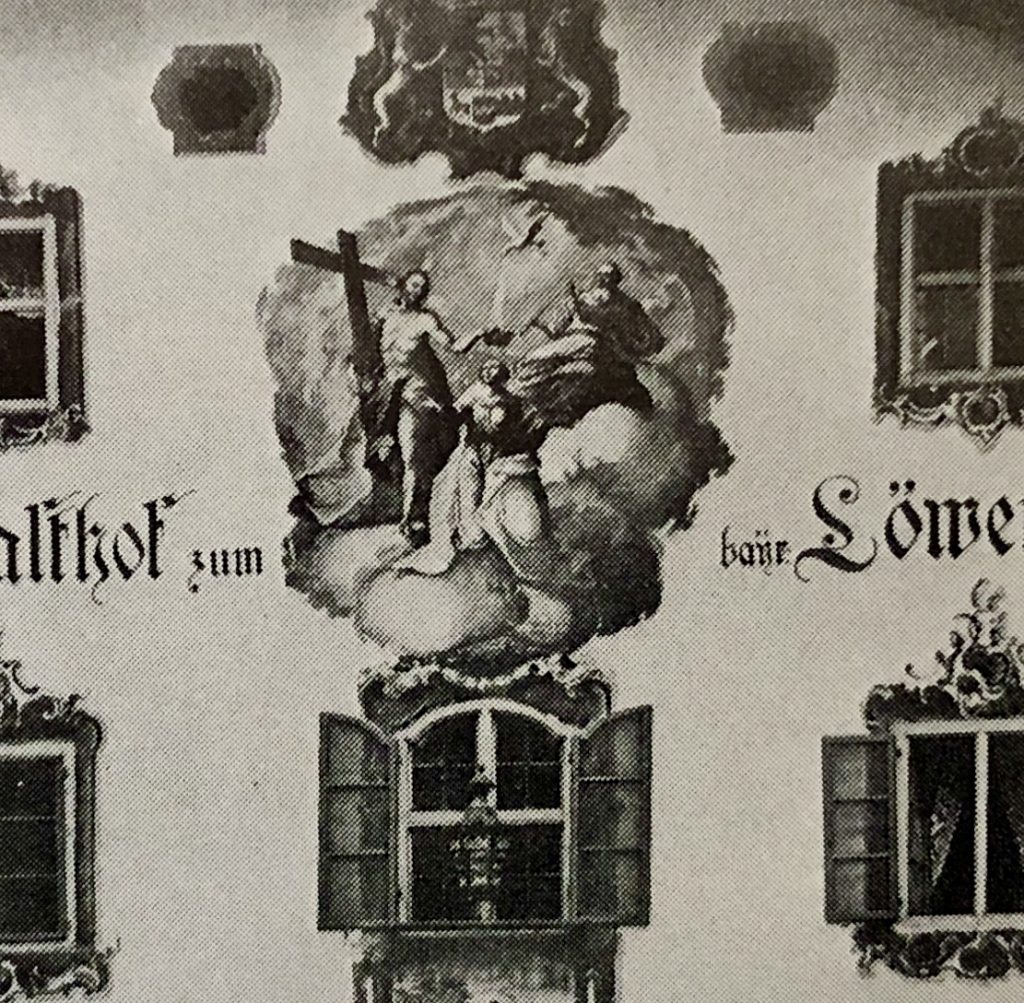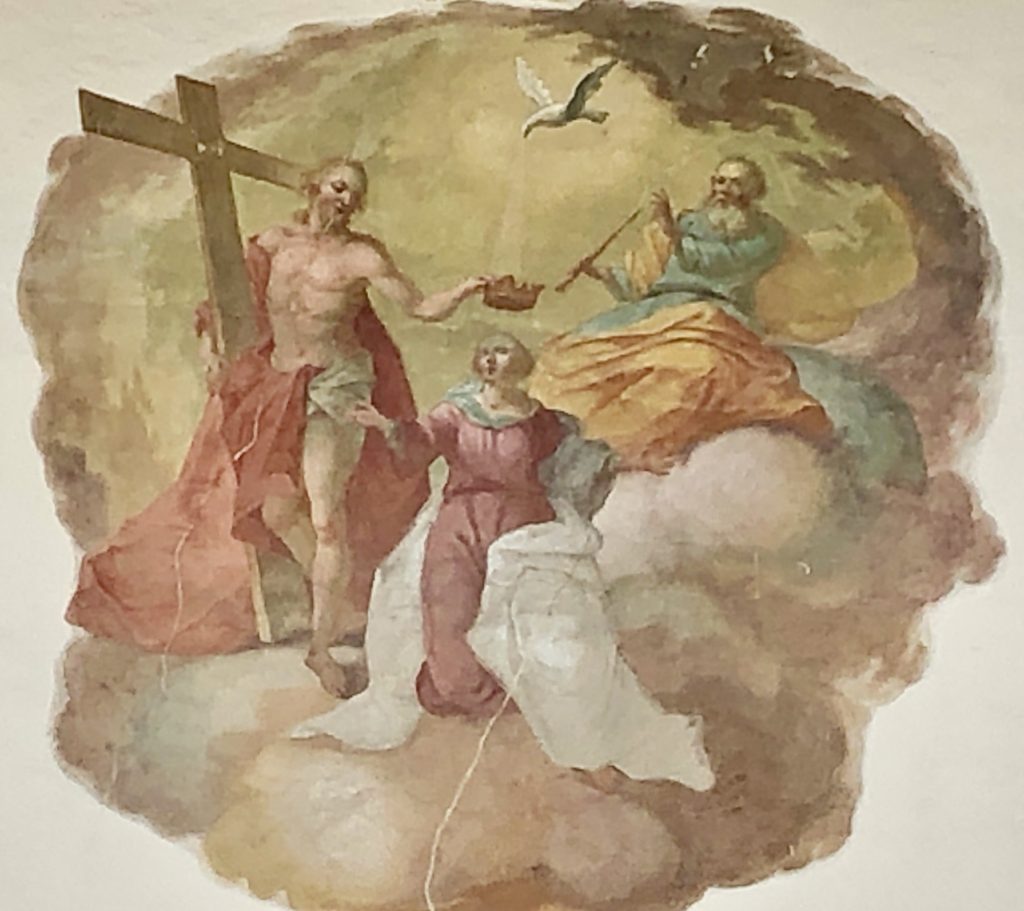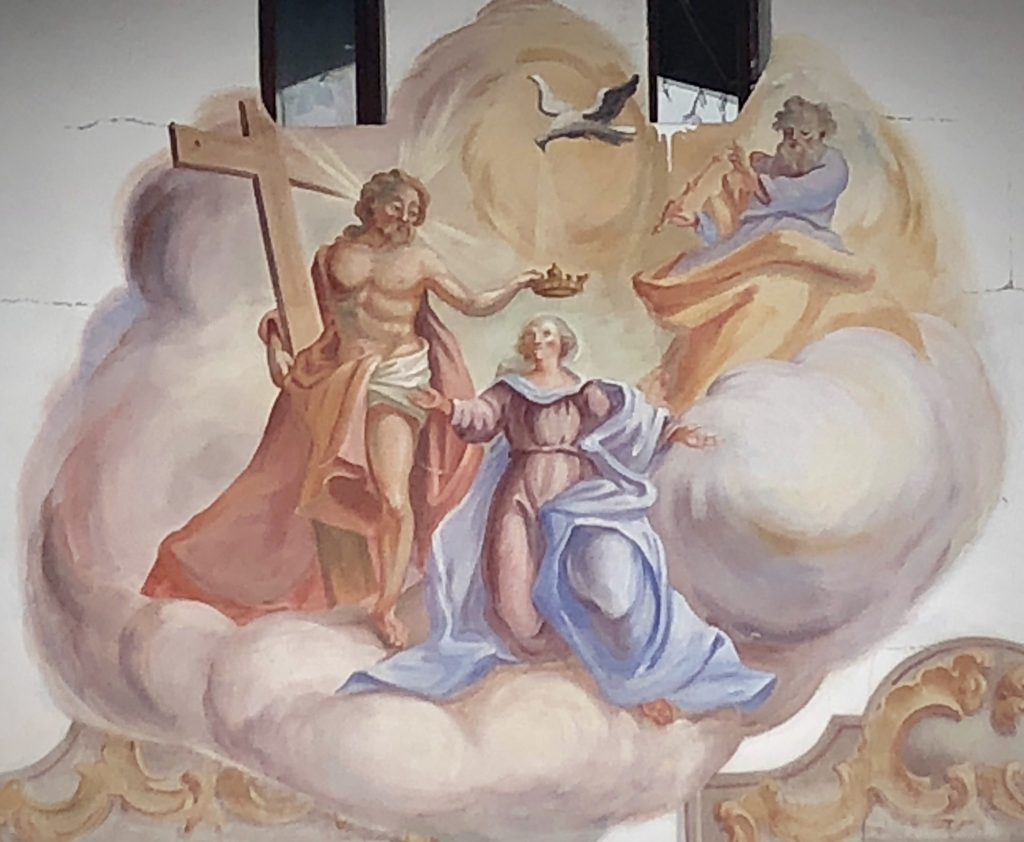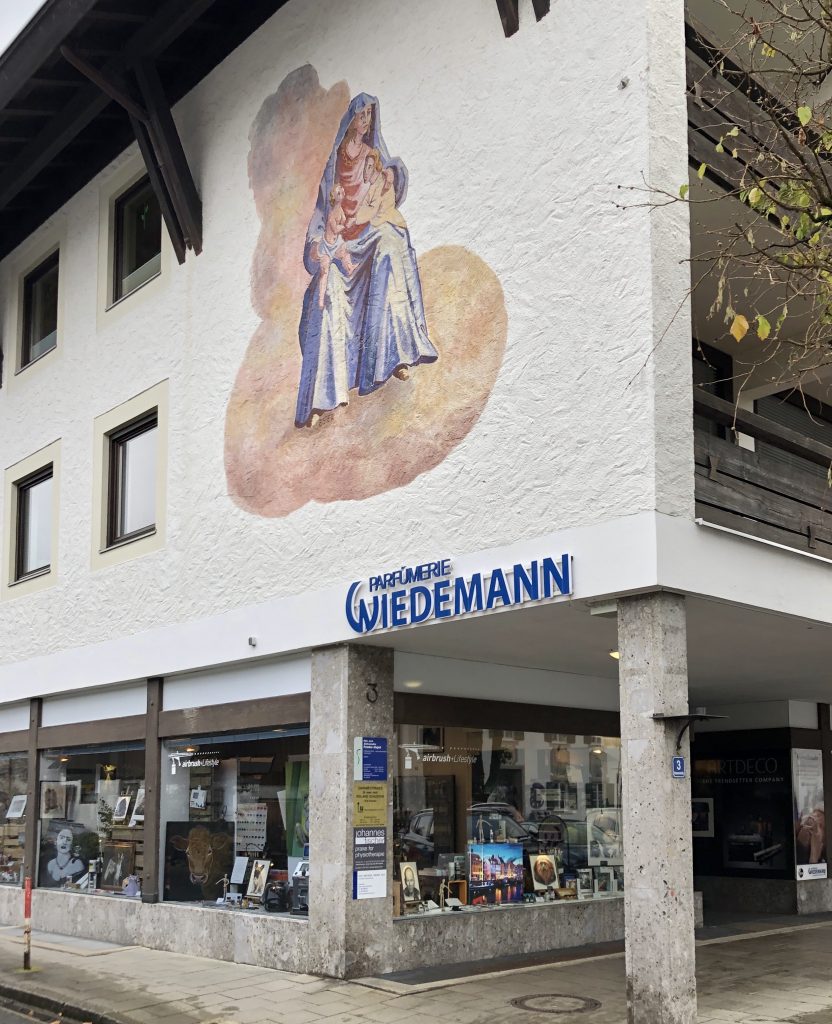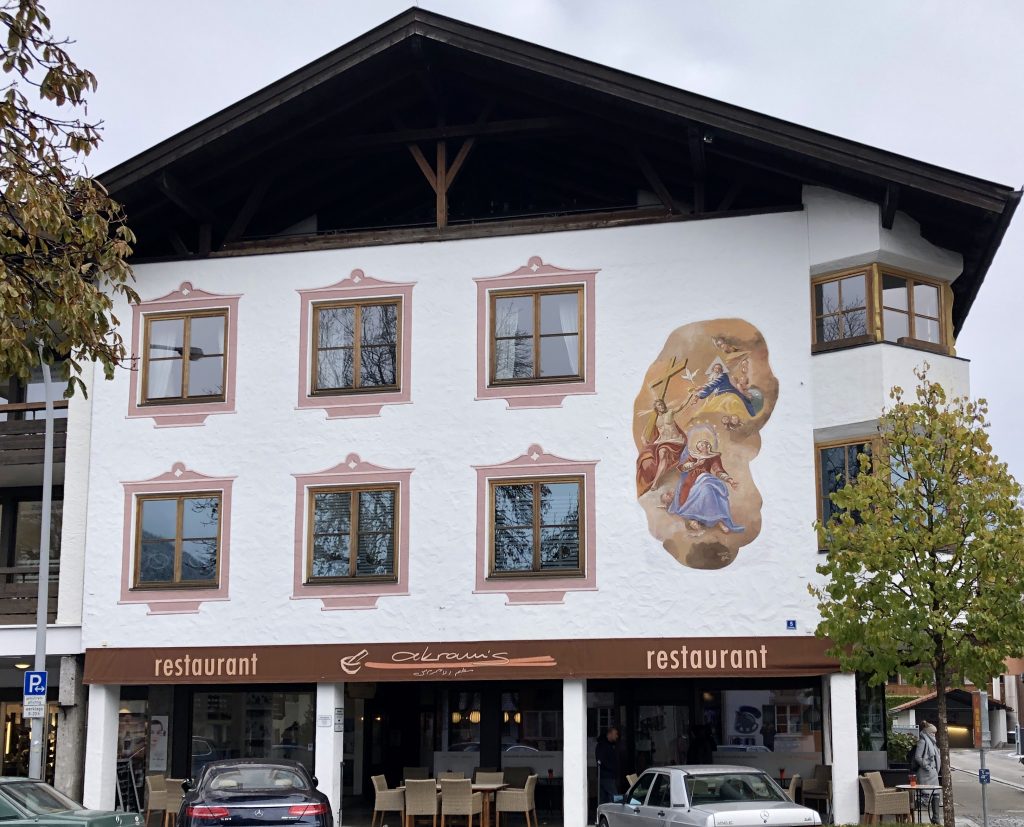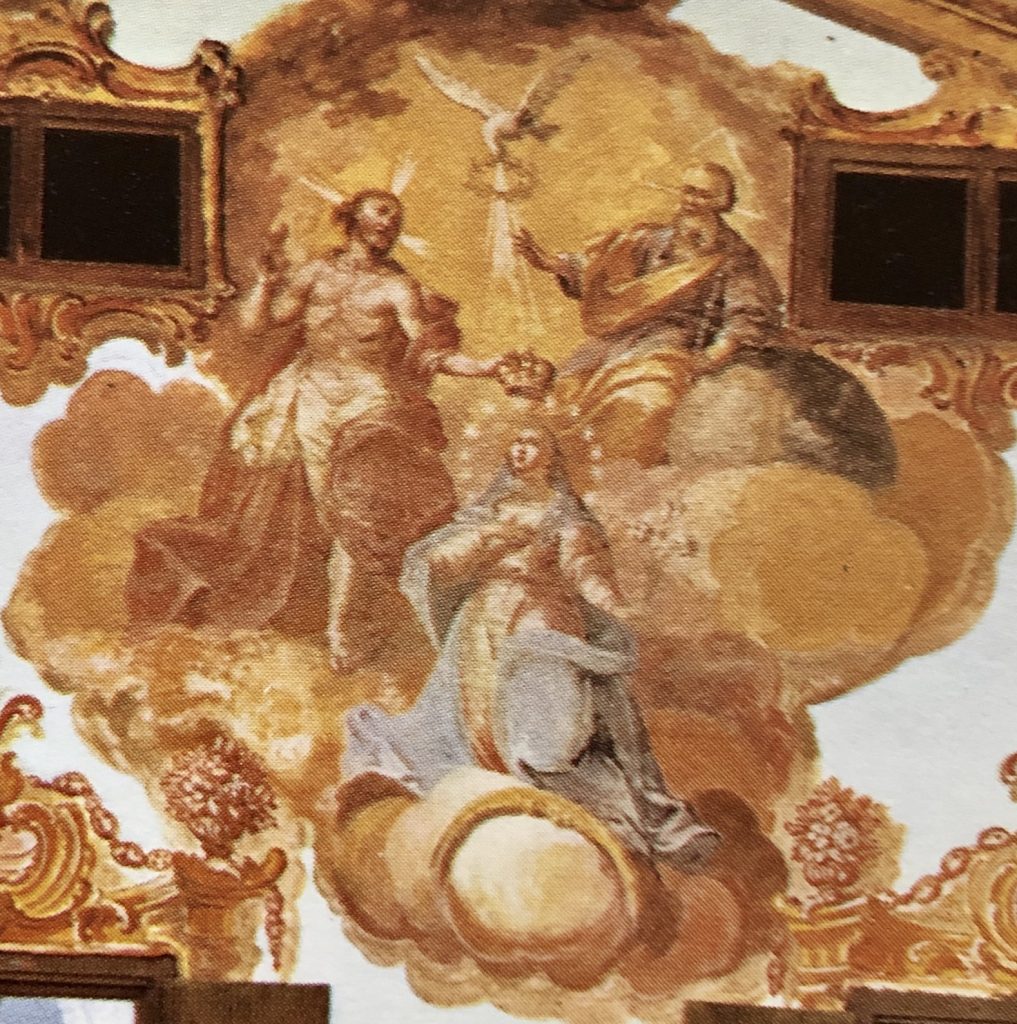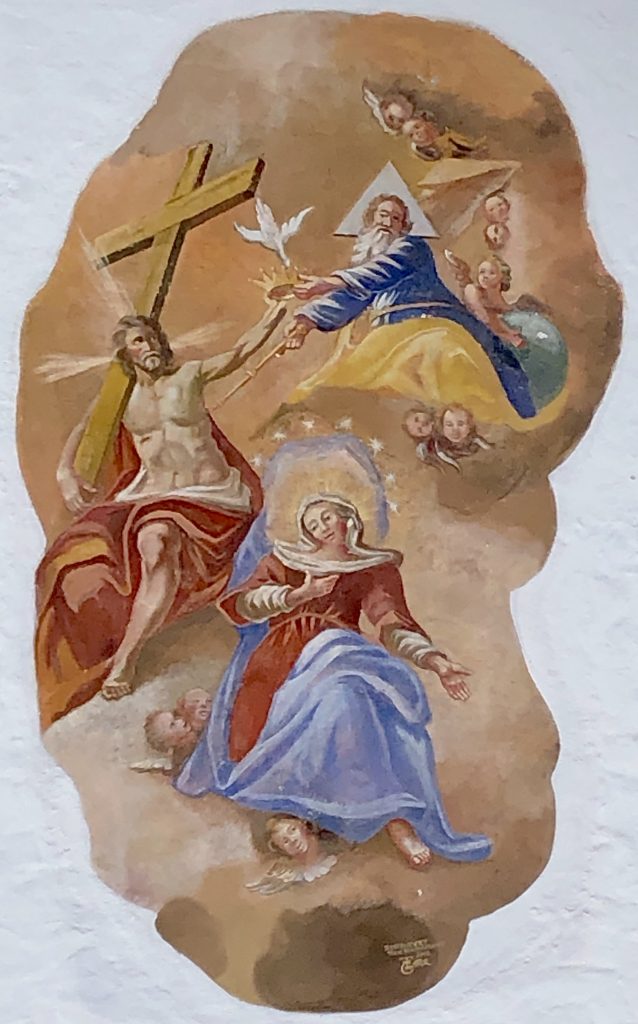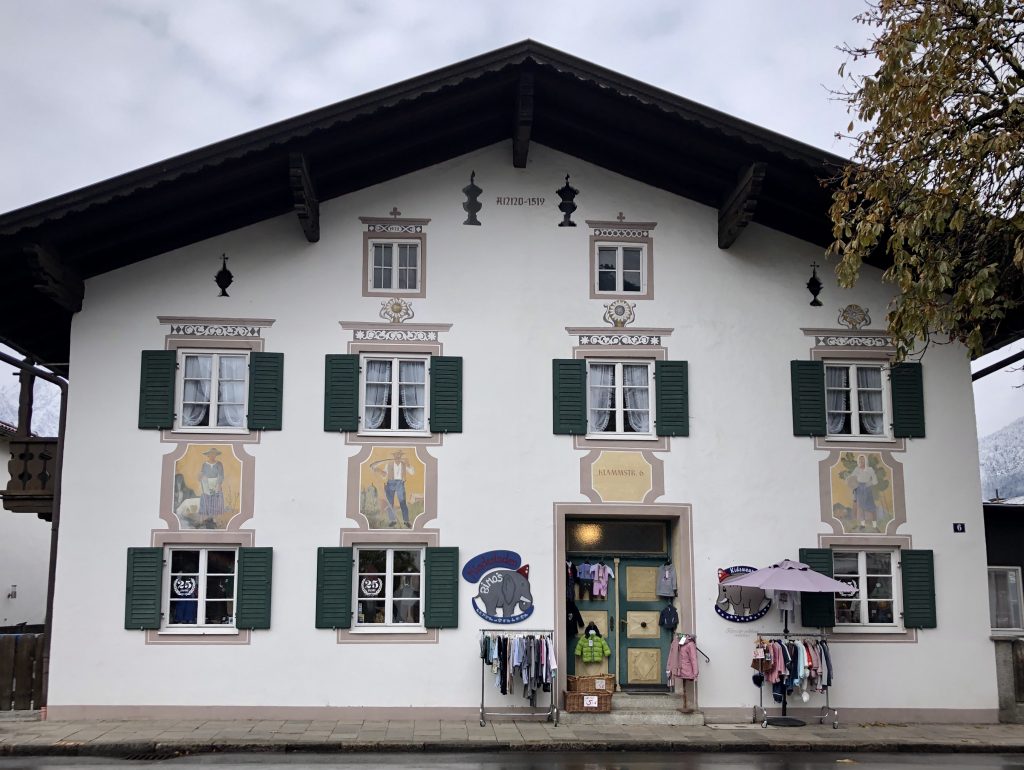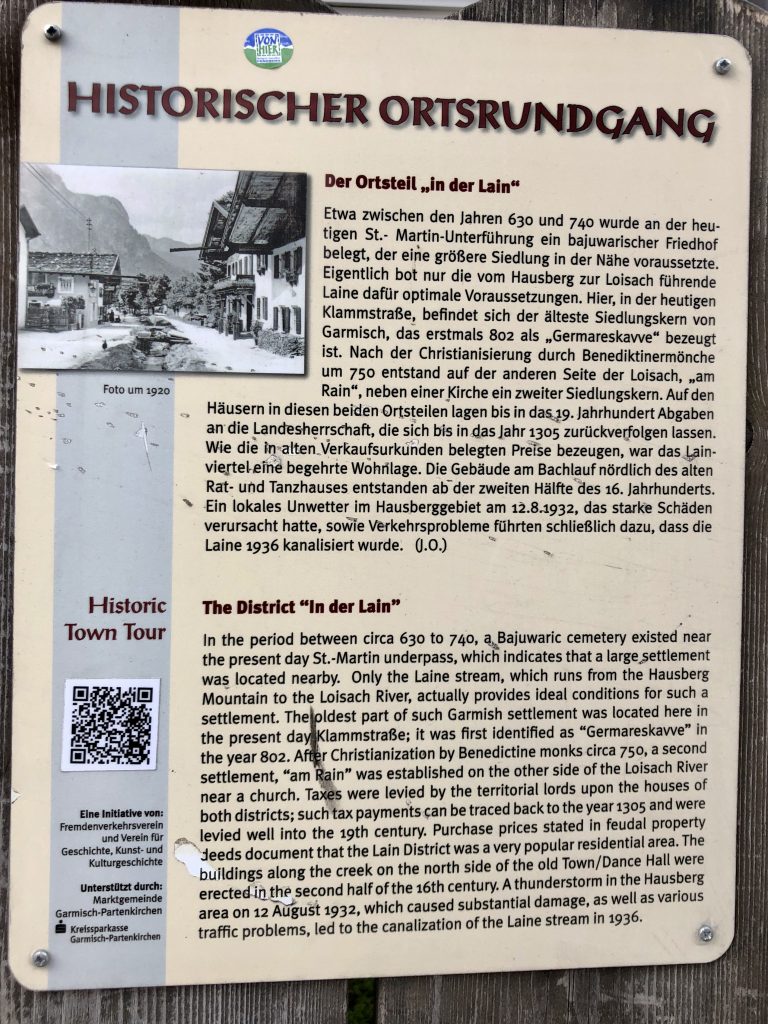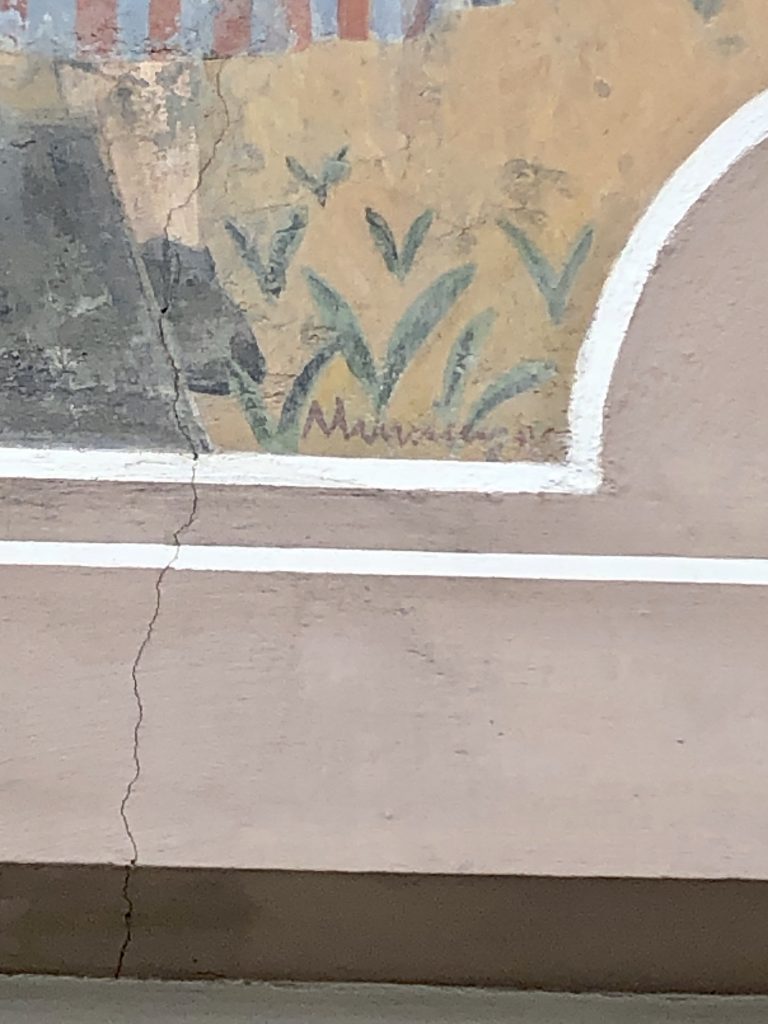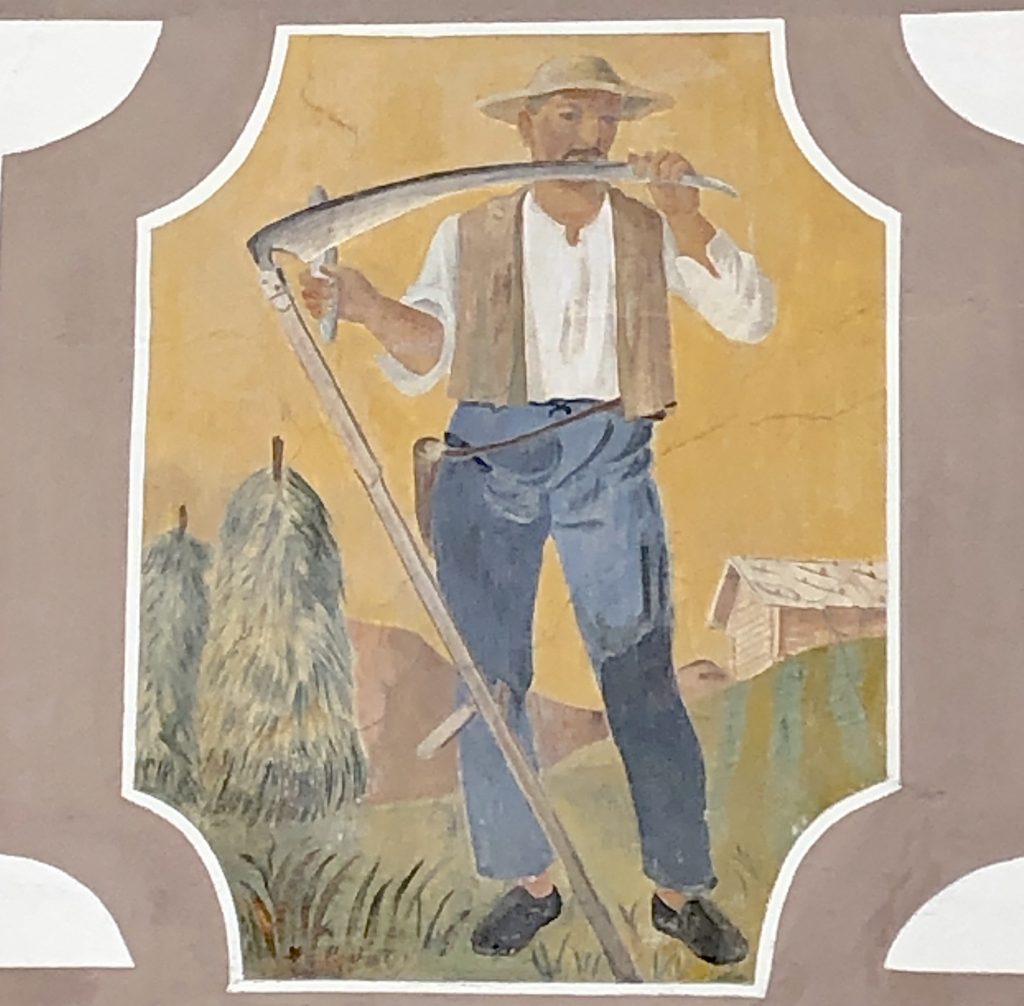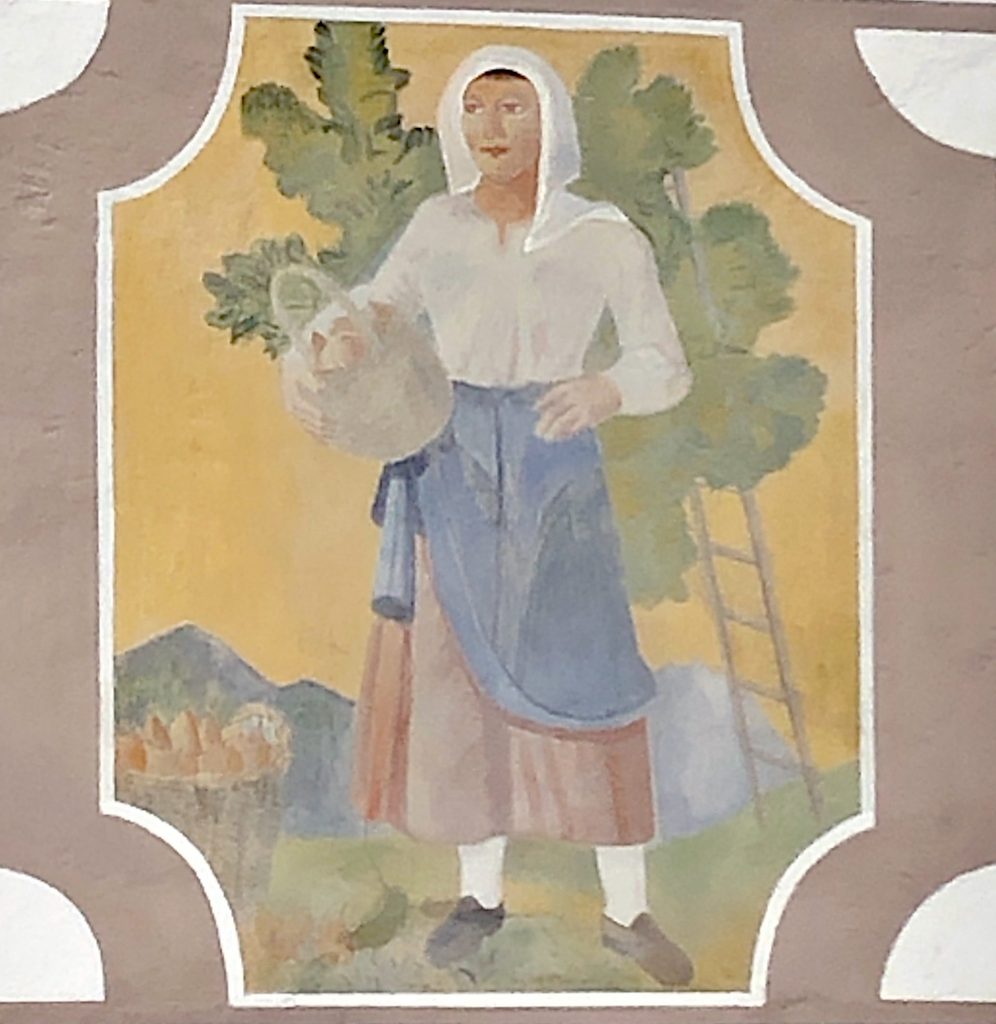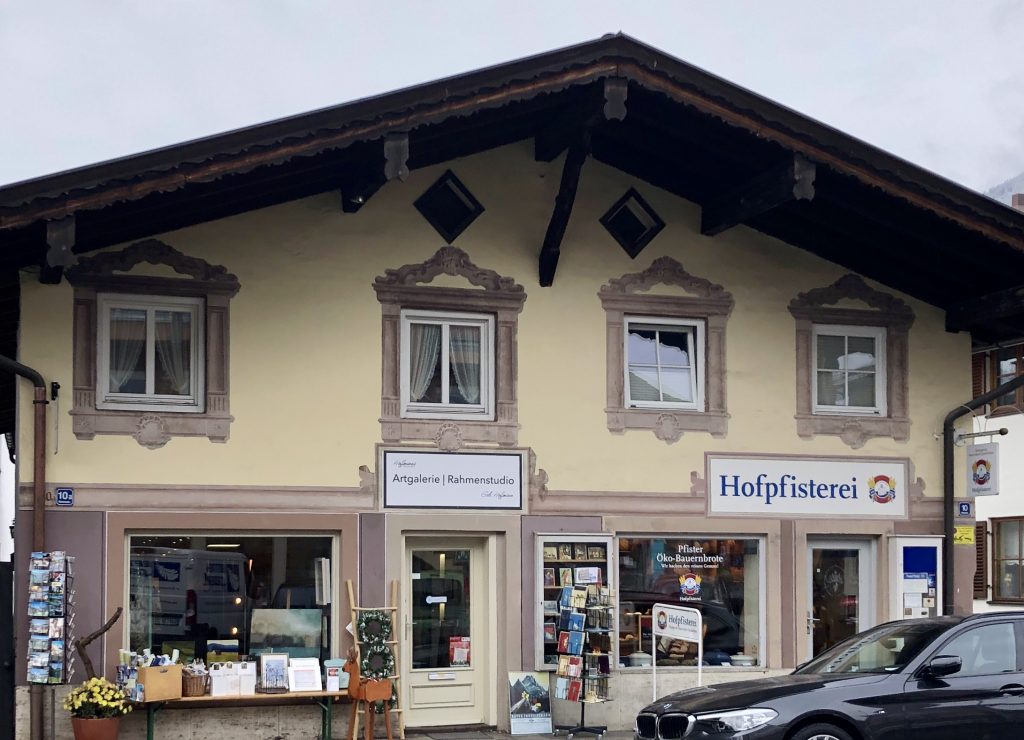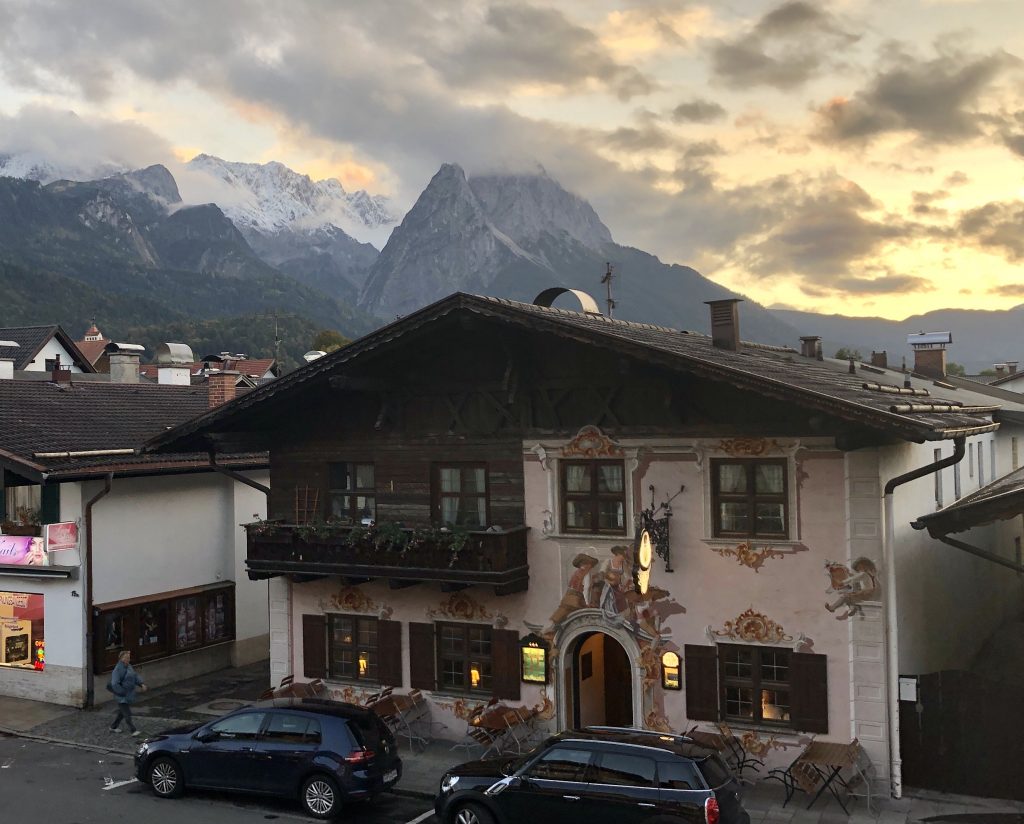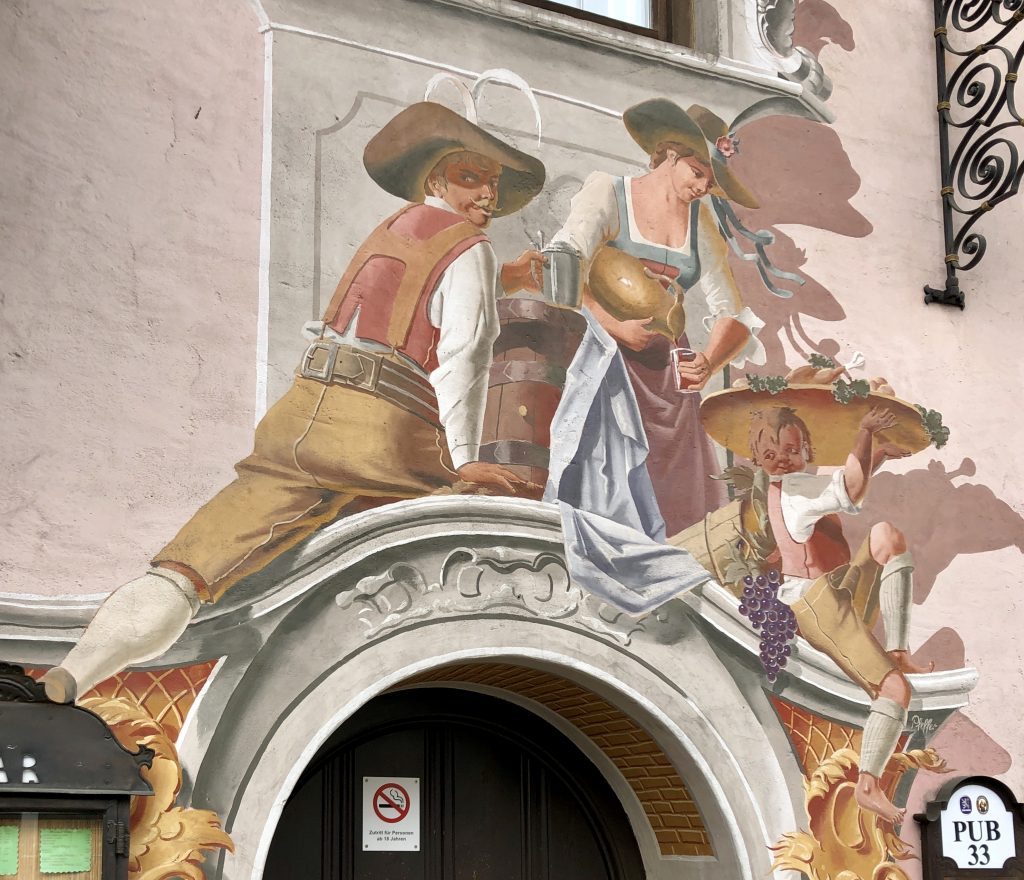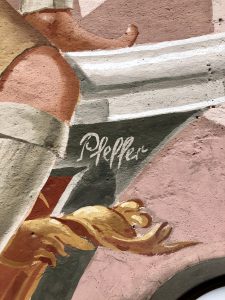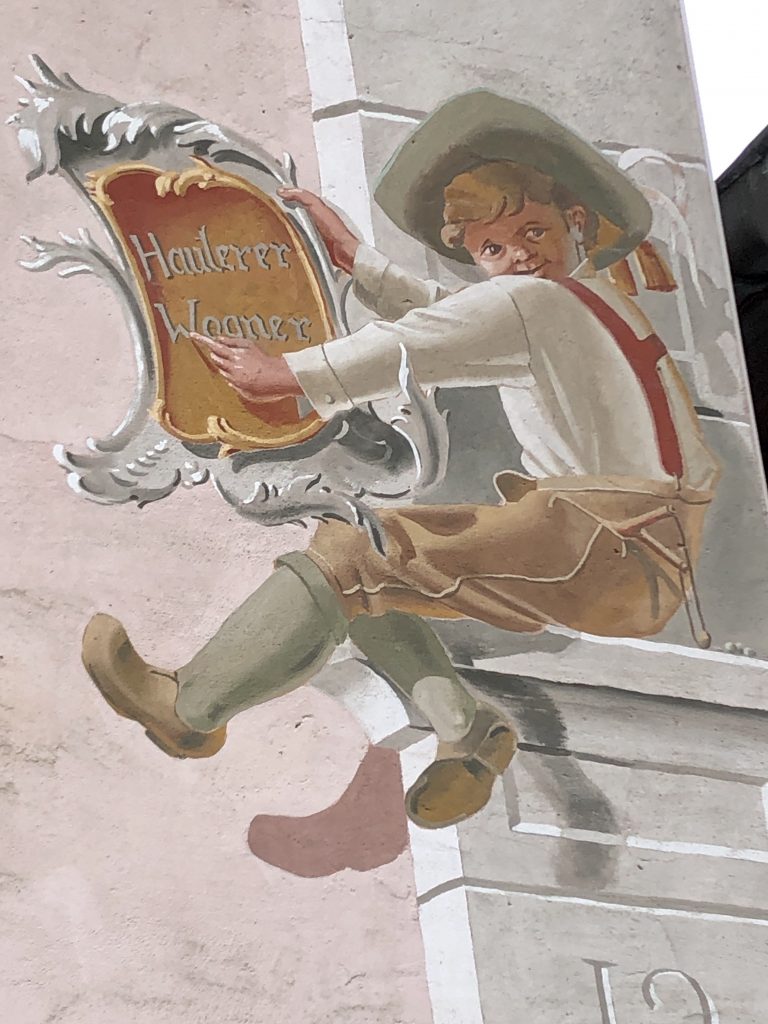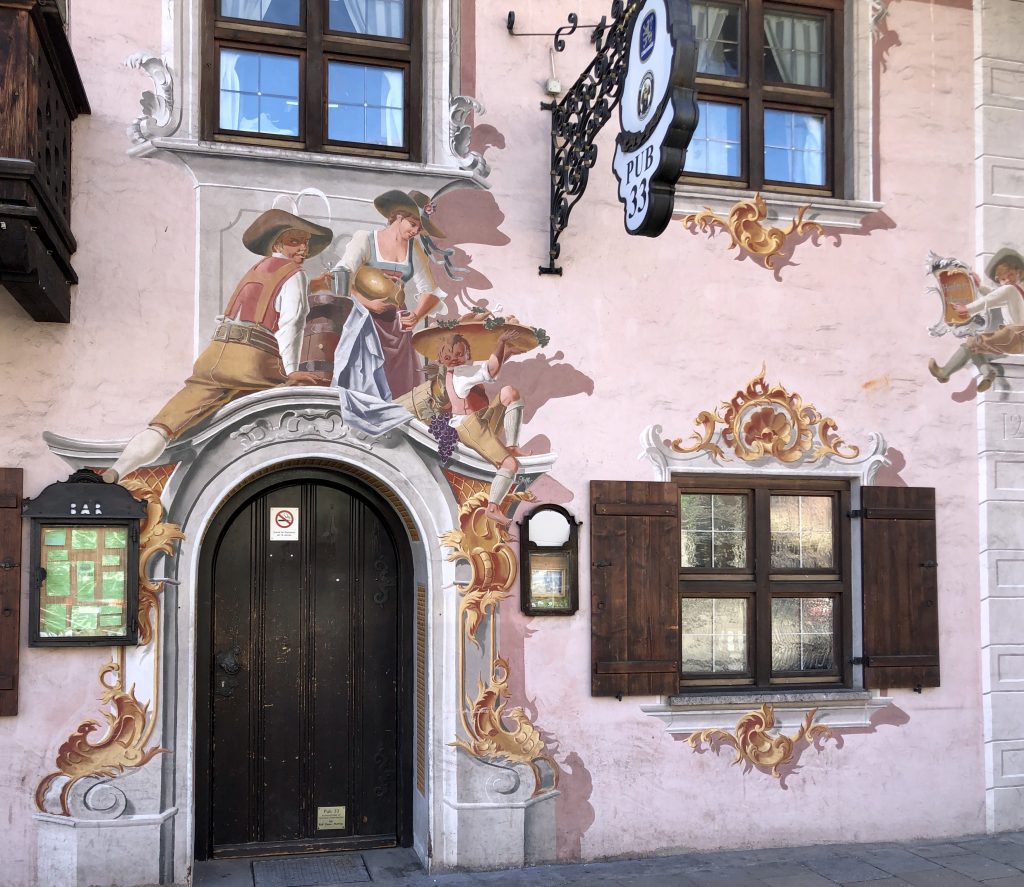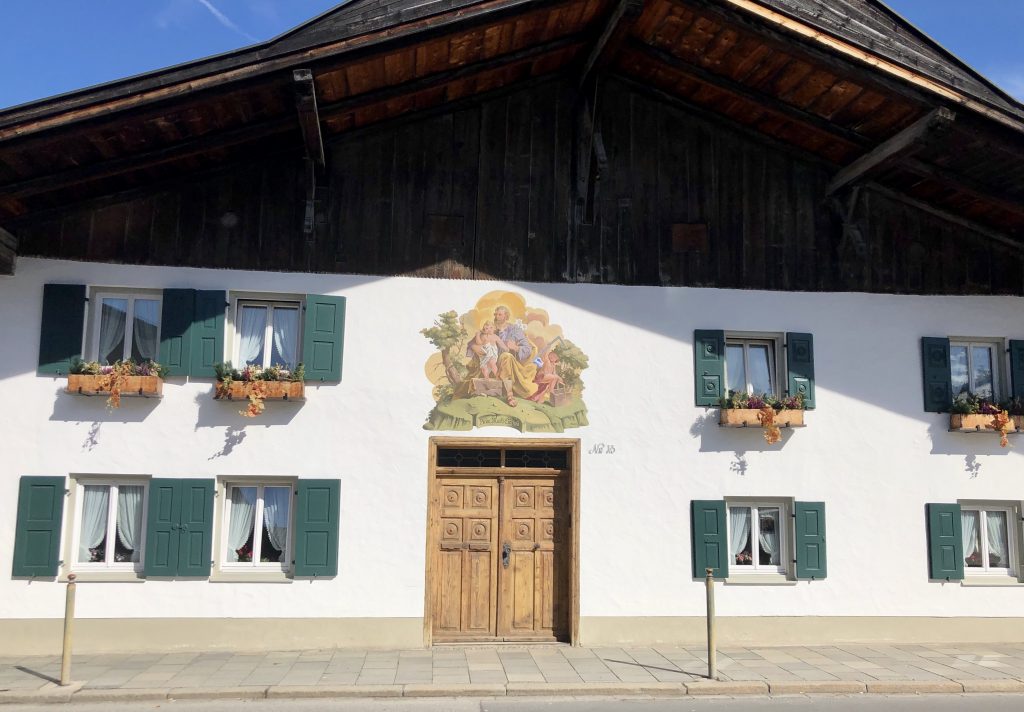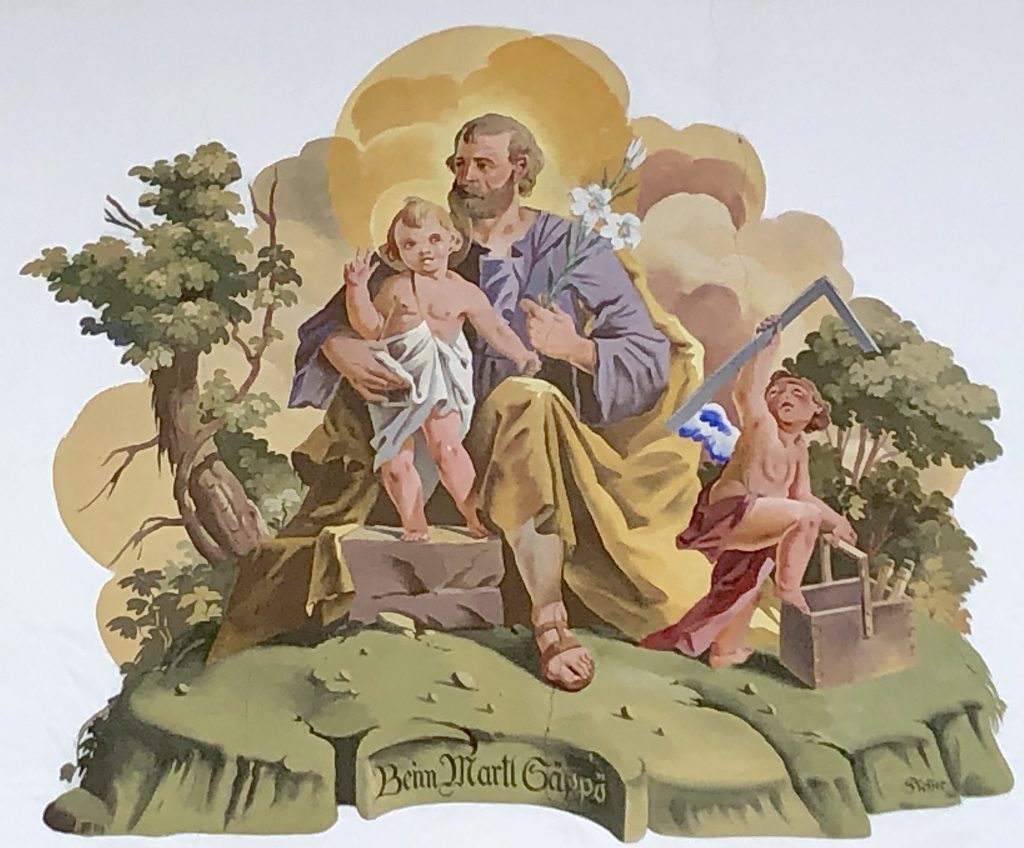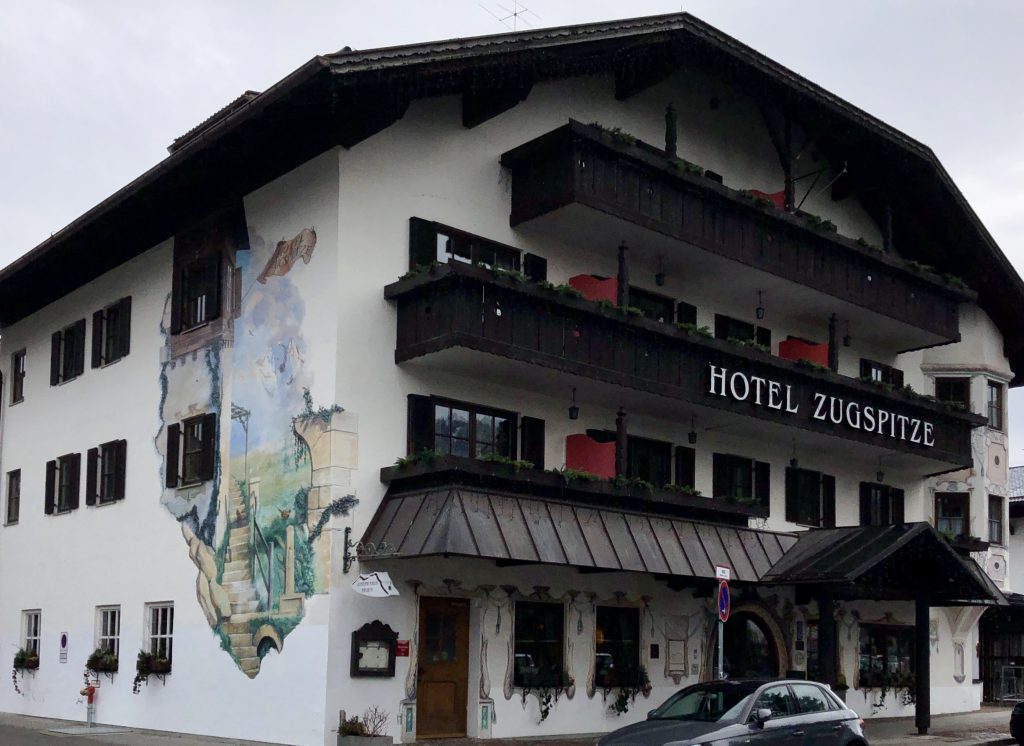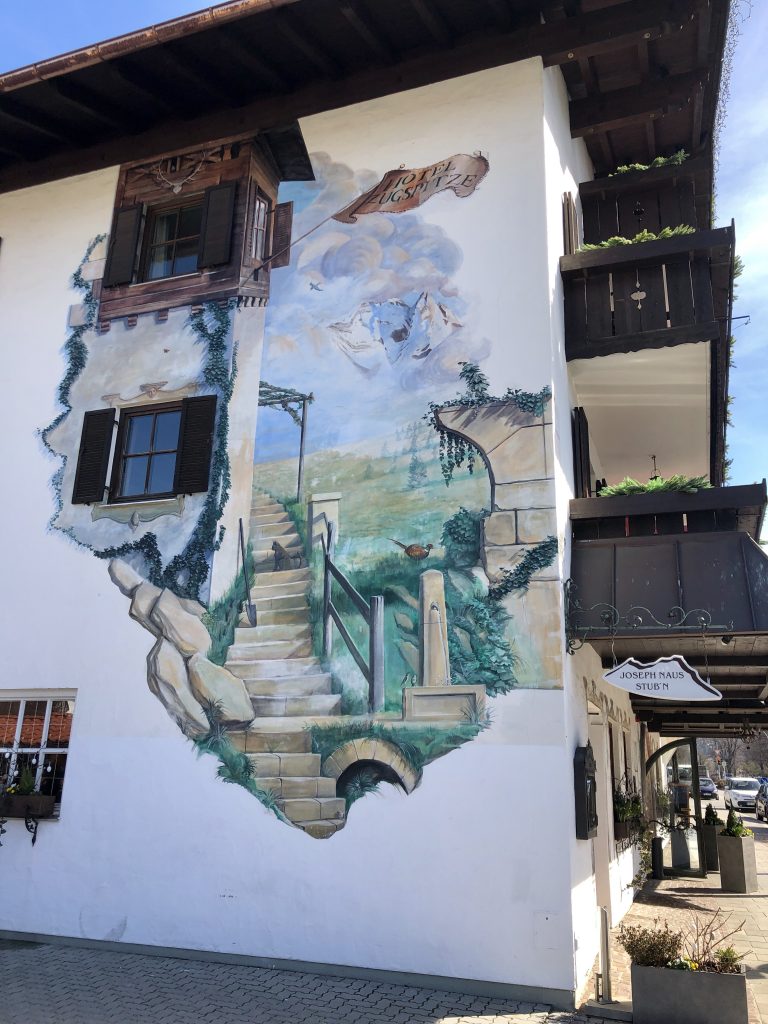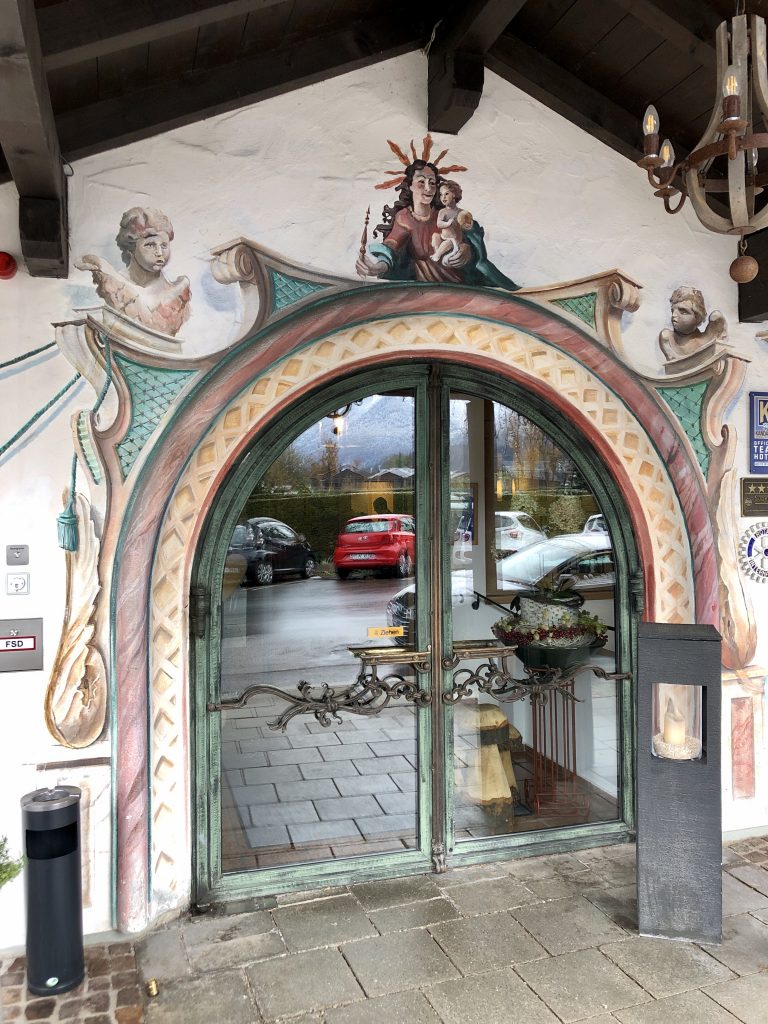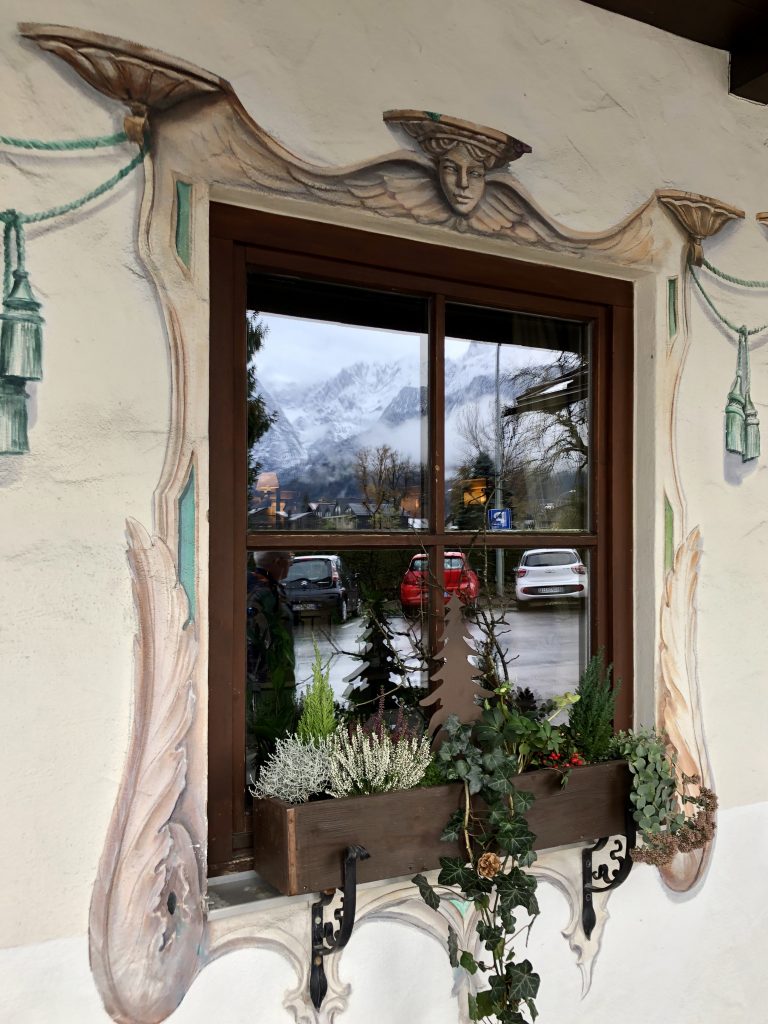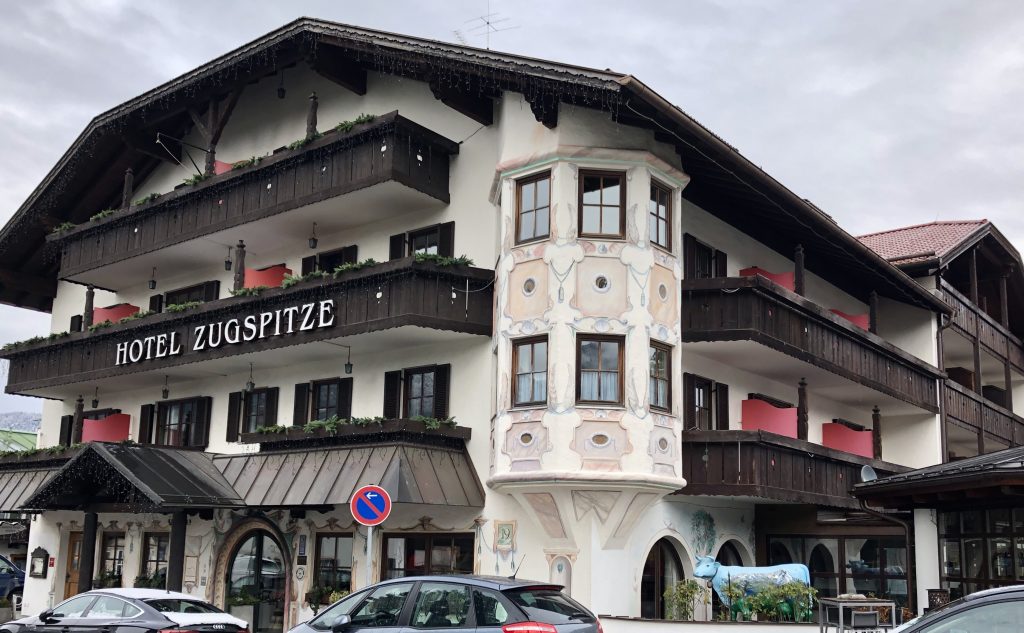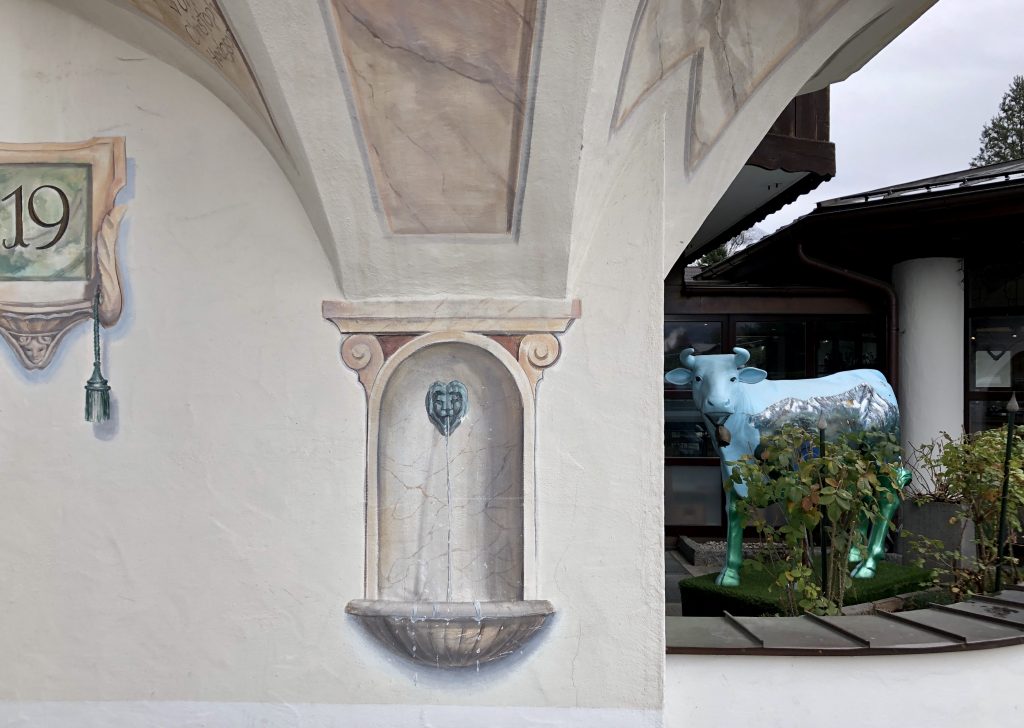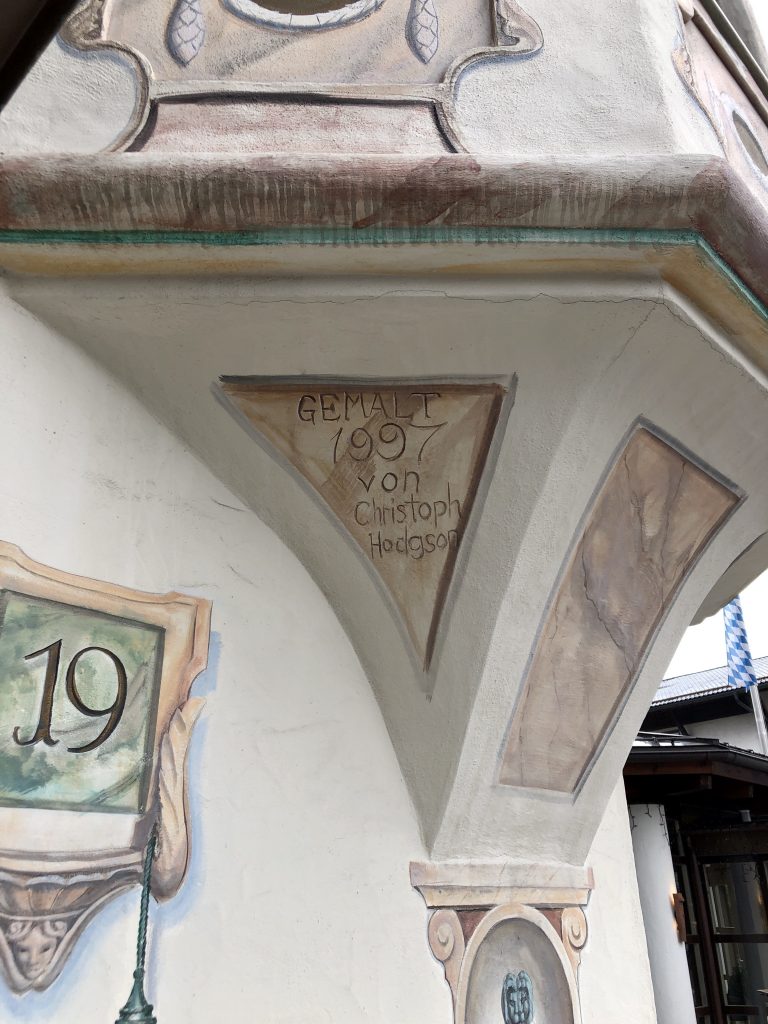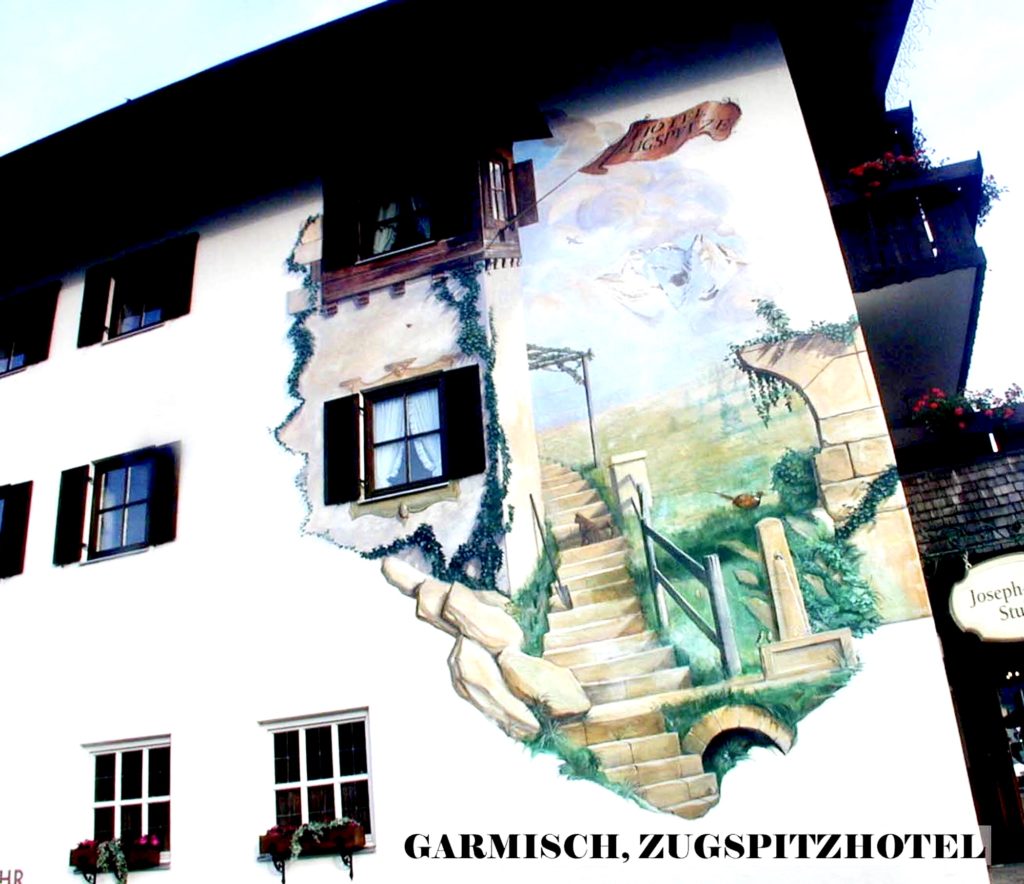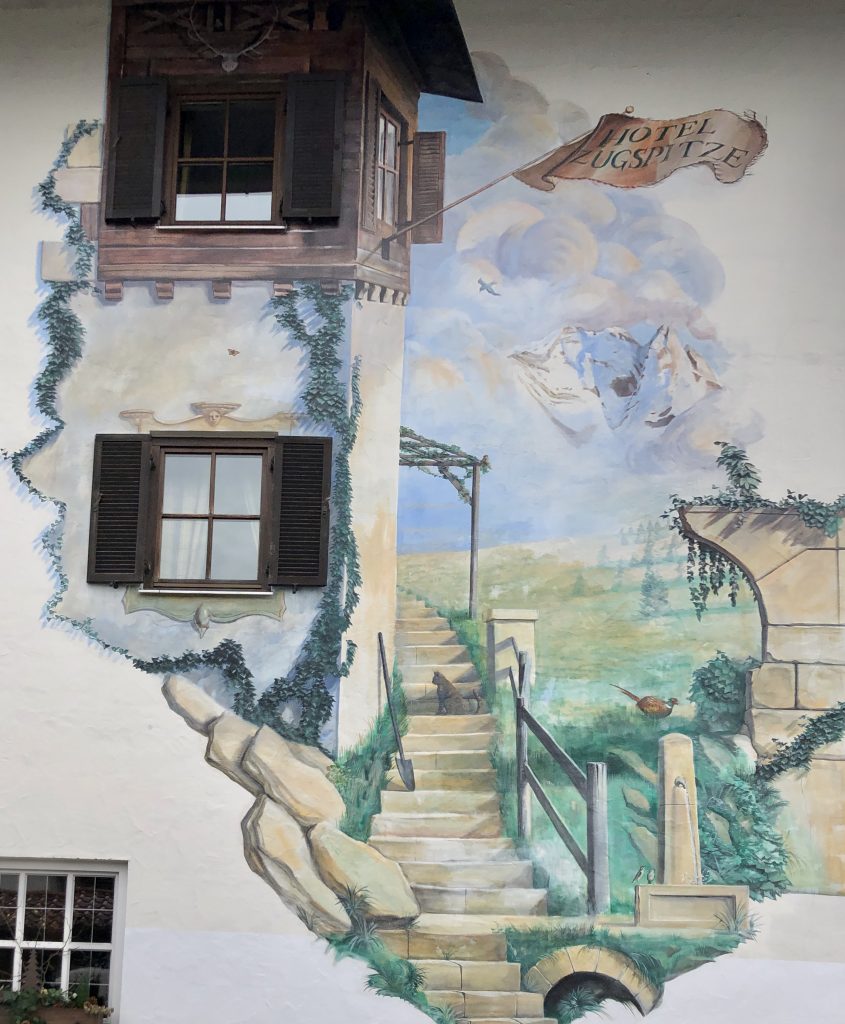- Härtl, Rudolf. Heinrich Bickel - Der Freskenmaler von Werdenfels. Adam Verlag, 1990, p. 123: "A 137 Klammstraße 4, Betten Strüwer: Schmied und Heiliger mit 2 Pferden; nach 1945."
- Bierl, Hermann. "Garmisch-Partenkirchen und seine Lüftlmalereien." Mohr, Löwe, Raute. Beiträge zur Geschichte des Landkreises Garmisch-Partenkirchen, Band 18, Verein für Geschichte, Kunst- und Kulturgeschichte im Landkreis Garmisch-Partenkirchen, 2020, p. 139: "353 Klammstraße 4 schmied und Hl. Leonhard Bickel ca. 1958 Nebenan ehemals eine Schmiedewerkstatt, heute Schlosserei Schießlbauer".
- Bronner, Franz Joseph. Von Deutscher Sitt' und Art. Munich: Max Kellerer, 1908, p. 327, footnote: "Nr. 7 und 8 (Villa Byschl). Am Giebel ist eine Krönung Mariens, die im Farbenton und in der Auffassung an den Oberammergauer Meister Frz. Zwinck erinnert. (Siehe diesbezüglich auch das Fresko an Nr. 144a!) Auch Äußerlichkeiten wie die Körperhaltung Jesu, Gottvaters und Mariens sprechen für eine solche Annahme."
Lüftlmalerei
A street by street guide to the fresco and facade paintings in the Garmisch-Partenkirchen district
